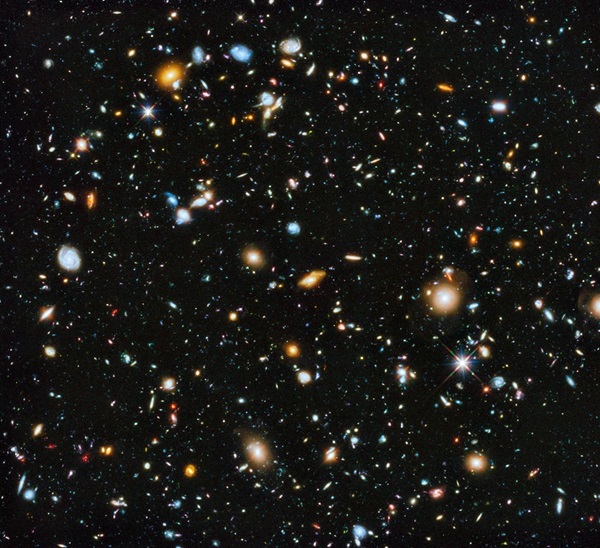What is the difference between the observable universe and the whole universe?
About 13.8 billion years ago, the Big Bang kicked off the universe, filling it with matter, dark matter, and dark energy. Since then, the universe has expanded into what we see (and don’t see) today.
Light, the fastest thing in the universe, has a speed limit of about 186,000 miles per second (about 300,000 km/s). This means that, from our viewpoint, we can only see as far as the light from the farthest objects has been able to travel in the time since the Big Bang. You can essentially think of the observable universe as a sphere surrounding any point in the cosmos — in our case, Earth. The radius of that sphere is 46 billion light-years.
It may seem counterintuitive to think of the cosmos as existing beyond the observable universe, especially if even light has a finite speed. But the universe’s expansion rate isn’t limited by the speed of light. So, while we’re limited to just the observable universe, space is constantly growing. The exact size of the whole universe is unknown, but estimates put it at around 23 trillion light-years in diameter. Other cosmologists say that the whole universe may simply be infinite.










